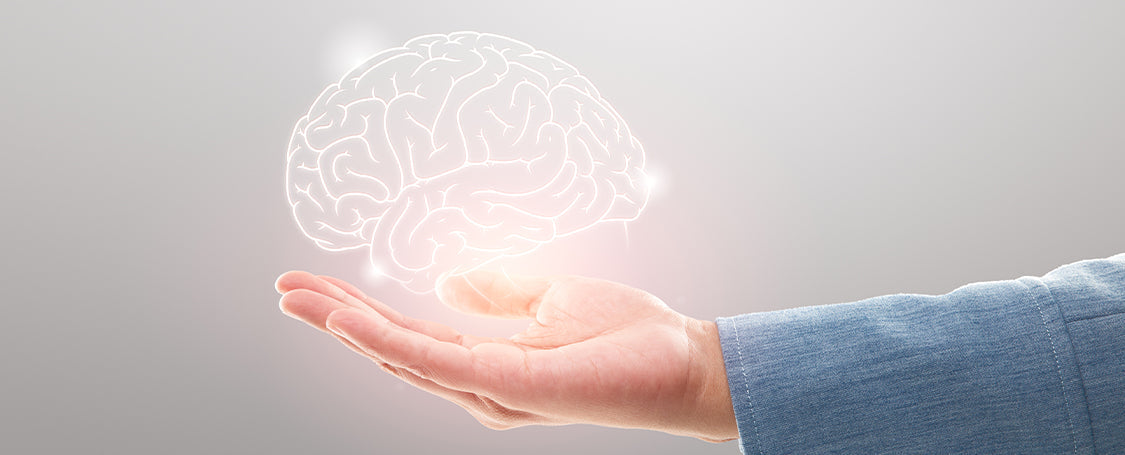
The body’s richest blood supply circulates in the brain. There are tens of billions of neurons in a healthy human brain. Apart from being the fundamental units of the brain and nervous system, neurons transmit information via electrical and chemical signals from the brain to the body organs. When this communication is disrupted, Alzheimer’s disease affects the brain. The neurons constantly maintain and repair themselves and build new synaptic connections, which is very important for learning and memory. Then there are the glial cells that outnumber neurons by 100 to 1. Glial cells collaborate with brain blood vessels to protect the neurons and clean out cellular debris. Together the regulate the brains delicate balance.
A healthy brain does not lose large numbers of neurons, but Alzheimer’s appears when the neurons stop functioning and die, causing the patient to lose their ability to function independently.
Beta-amyloid comes from a protein found in nerve cell’s fatty membrane. It is chemically sticky and builds into plaques. Small clumps of beta-amyloid plaque may be the culprit blocking the synaptic signals within the neurons and are thought to play the main role in Alzheimer’s.
In a healthy brain, the protein fragments are broken down and eliminated, but Alzheimer’s patient’s brains have hard insoluble amyloid clumps. The ‘tau’ protein consists of twisted fibres called neurofibrillary tangles and forms part of a microtubule (microscopic hollow tubes). The microtubule transports nutrients between nerve cells. In Alzheimer’s the tau protein is abnormal and the microtubule structures collapse. It is thought that an immune response is triggered by the presence of plaque and the tangles form inside the neurons, ultimately killing the cell.
Isn’t the brain an amazing organ?
By identifying the cause of the neurons dying off, scientists have researched the link between liver bile salts, plaque and Alzheimer’s. All scientists want to know the root cause of the disease and it appears that many issues lead back to the liver bile duct and digestive health.
When you eat, the gallbladder stores bile to release into the small intestine, via the duodenum. Bile is made in the liver. It contains a mix of products such as bilirubin, cholesterol, bile acids and salts. Think of bile ducts as drainage channels that carry bile salts from the liver to the gallbladder and from the gallbladder to the small intestine. Then the gut microbes metabolise the bile salts into ursodeoxycholic acid (UDCA). In a further process it is connected to a taurine molecule to create TUDCA.
The gut microbes can’t do their job unless they have bile salts, so problems arise with blockages (gallstones) and not enough bile produced. Given that bile salt influences so many bodily functions, it has recently become the subject of scientific studies. If the bile duct blocks the liver starts to die. If the liver can’t excrete pollutants, it continually processes liver cells to produce more free radicals, affecting the liver cells mitochondria.
Bile is a complex mix of water, acids, electrolytes and other organic molecules. Bile breaks down foods, absorbs vitamins, destroys bacteria, eliminates waste, excretes cholesterol and regulates metabolism.
The body pushes all fluids through the lymphatic and cardiovascular systems to the liver. The liver then filters the fluids, with the clean fluids recirculating. The dirty fluids are deposited into the bile duct to be carted away through the intestines, ensuring pollutions are removed from your body. If the bile duct is blocked, all that sludge sits in the bile duct causing inflammation and liver damage, except that it affects other organs too, including the brain. And because the bile breaks down vitamins and absorbs fats, the body will have a nutrient shortage. If the liver is not making bile salts, the body cannot absorb vitamin D. A healthy body re-circulates 95% of their bile salts.
So, does this domino effect proceed to the brain?
TUDCA crosses the blood brain barrier and is classified as a chemical chaperone – small molecules that enhance the folding of proteins. In essence TUDCA restores brain proteins by stabilising their structure. But the Alzheimer’s brain doesn’t break down the proteins properly and forms the amyloid plaque. The Natural Library of Medicine studies show that TUDCA has helped remove amyloid plaque and also prevent production.
It is thought TUDCA may prevent swelling in the mitochondria. TUDCA helps stop DNA from disintegrating and your cells live longer. By helping reduce the toxic effects of brain amyloid plaque, the body’s cognitive functions last longer. Studies have shown protection of the brain from stroke injury.
TUDCA can also:
- Increase bile flow by 250%.
- Change the bile composition to assist digestion
- Protect mitochondria by producing antioxidants.
- Support healthy cells and prevent them from dying
- Fight liver cirrhosis
- Maintain gut integrity by helping gut protein messengers prevent things from passing into the blood stream through the intestinal lining
- Promotes healthy gut bugs
- Protects the kidneys from chronic stress and inflammation brought on by high sodium levels
- Increase energy burned at the cellular level, maybe affecting how the body regulates insulin through the pancreas.
- Have antiviral effects, including how some viruses may replicate and multiply
- Protect against genetic eye disease and improves dysfunctional eye cells
- Lower liver enzymes
- Combat colon inflammation
- Inhibit RSV infection by preventing the virus from replicating
- Increase the amount of dopamine cells
SYPMTOMS OF LOW BILE ACID – diarrhoea, smelly gas, stomach cramps, irregular bowel movements, weight loss or pale coloured poo.
Bitter foods are good at stimulating bile acid, such as celery juice.
Sold as a supplement, TUDCA has not been approved for medicinal use as it lacks solid clinical research. Naturally occurring bile acid has been used in Chinese medicine for over 3000 years, but we do not advocate the use of imported bile extracted from ‘farmed’ bears in China and suggest you buy a synthetic bile supplement. Take the supplement when consuming a meal.
Written by Mona Hecke
Mona Hecke is a degree qualified Naturopath, nutrition specialist and health and wellness writer.
With over 20 years in the health industry, beginning with a focus on children and families, and a bestselling book ‘The Lunchbox Revolution’, Mona is now empowering women through education and conversation to take action and embrace change. Gut health, mindfulness, nutrition, hormones, and menopause are the topics that women want and need to know to create their healthy future.
Mona holds certifications in Lifestyle Coaching, Kinesiology, holistic herbal medicine, and nutrition.
A recognised leader in the health industry, Mona’s strong social media presence and passion for influencing change will continue to be a catalyst for health reform for the benefit of every Australian.






